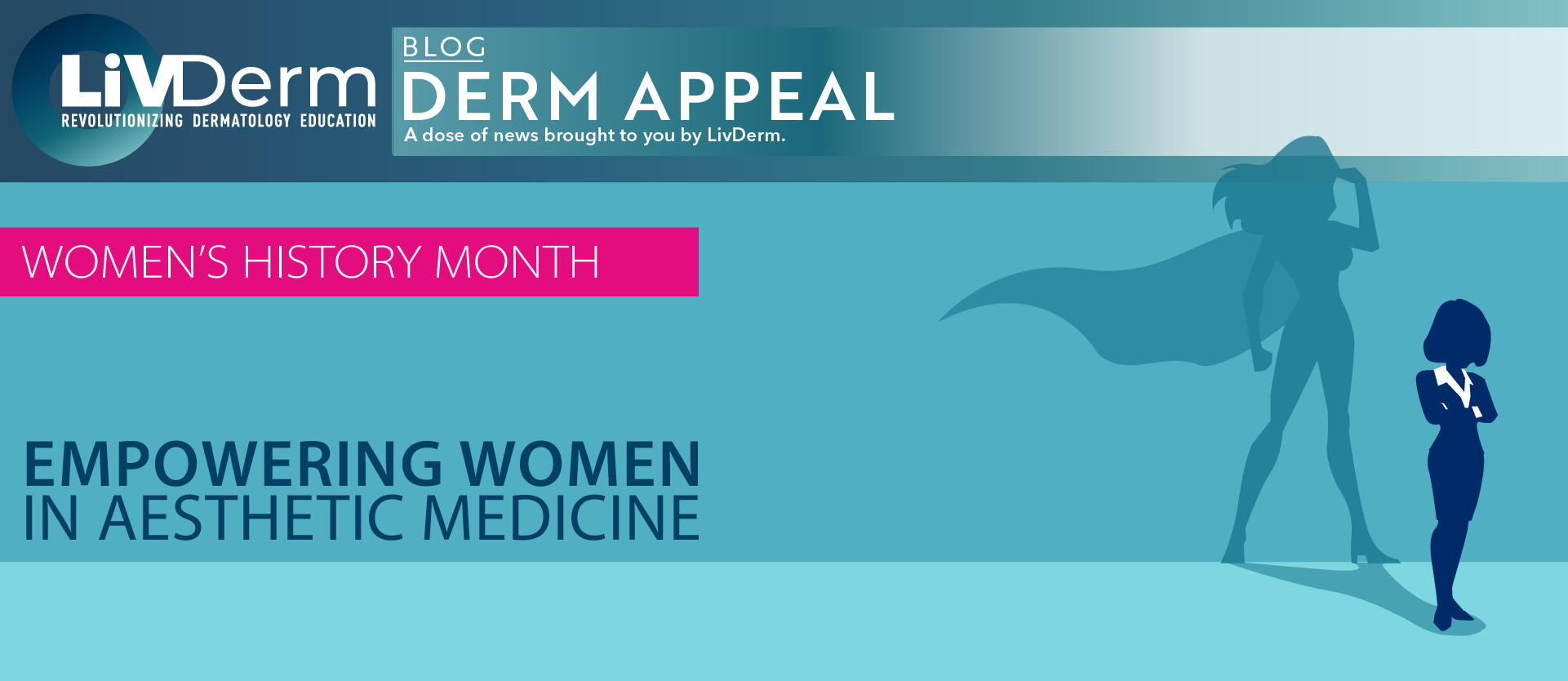Female leadership remains significantly underrepresented in the aesthetic medicine industry despite continuous initiatives aimed at promoting gender equality. There is a pressing need for more strategic efforts, programs, and campaigns that empower women entering the healthcare space and encourage them to pursue careers in dermatology, plastic surgery, and other facets of medical aesthetics were female practitioners are notoriously lacking. Patients of the specialty are predominately female, yet practicing physicians remain overwhelmingly male as women face many barriers in the pursuit of their careers ranging from challenges achieving a work-life balance to persistent under-compensation. Changing the current landscape requires conscious work on both an institutional and individual level – including widespread advocacy, enhanced learning opportunities, and systemic support.
Supporting Women in Dermatology
One of the primary barriers female physicians face in the industry is a pervasive lack of resources and tools to help them succeed. Fundamental support is often lacking with many women entering a male-dominated field with limited female guidance, mentorship, and network development leaving them on a difficult path to advancement. Additionally, resources such as business education – to offer the tools necessary to run a well-functioning medical practice – and childcare support for working mothers play a crucial role in facilitating a female physician’s career, however, very few healthcare facilities and organizations offer them.
Alongside structural systemic changes, there is a pressing need for advocacy; it is important for current members of the workforce, both male and female, to advocate for the improvement of gender inequality and draw attention to persisting disparities in the industry. One such prominent voice has emerged – William D. James, MD, a professor of dermatology at the University of Pennsylvania who published a pertinent article in the International Journal of Women’s Dermatology last year.
Exploring the issue, Dr. James highlights some of the ways male physicians can support their female colleagues:
“When supporting women for committees of power and influence, editorial boards, and jobs of high visibility, a discussion encouraging them to take on leadership if offered should be held,” he writes. “Women should understand that they have earned your respect and the confidence that they will do a superior job. In addition, women will provide a new fresh perspective and serve as a role model of success for younger women.”
The Importance of Mentorship
Combined with a paucity of female leaders in the field, minimal mentorship and networking opportunities place female physicians at a significant disadvantage. Offering more visibility to female leaders is crucial to encouraging future physicians to practice medicine, grow their practices, and further their careers.
Highlighting the importance of such support, Galderma Laboratories developed the Women in Aesthetic Leadership Council to bolster leadership roles of female physicians, practice managers, and other medical professionals in 2019. The council was designed to encourage gender equality in the medical aesthetics industry; its members serve as expert consultants on advisory boards across key U.S. markets, help guide the growth of programs and resources that support female-led businesses and research projects, as well as support female providers in aesthetics.
Concurrently, men in positions of power can support women in advancing their careers taking advantage of their higher visibility and more frequent opportunities for mentorship. As Dr. James writes: “Men are often in a position to issue invitations for guest lectures, visiting professors, or speakers at local or national meetings. Upon review of those invited, an even distribution of men, women, minorities, young up-and-comers, and seasoned sure-bets should be evident.”
Although the demographic trends within the medical and scientific communities have shifted significantly over the years, there is still a long way to go toward gender equality. The necessary changes will not occur without widespread support from practicing medical professionals and executives whose role it is to guarantee a diverse future cohort as well as an equitable, supportive environment for the practice of aesthetic medicine.

















